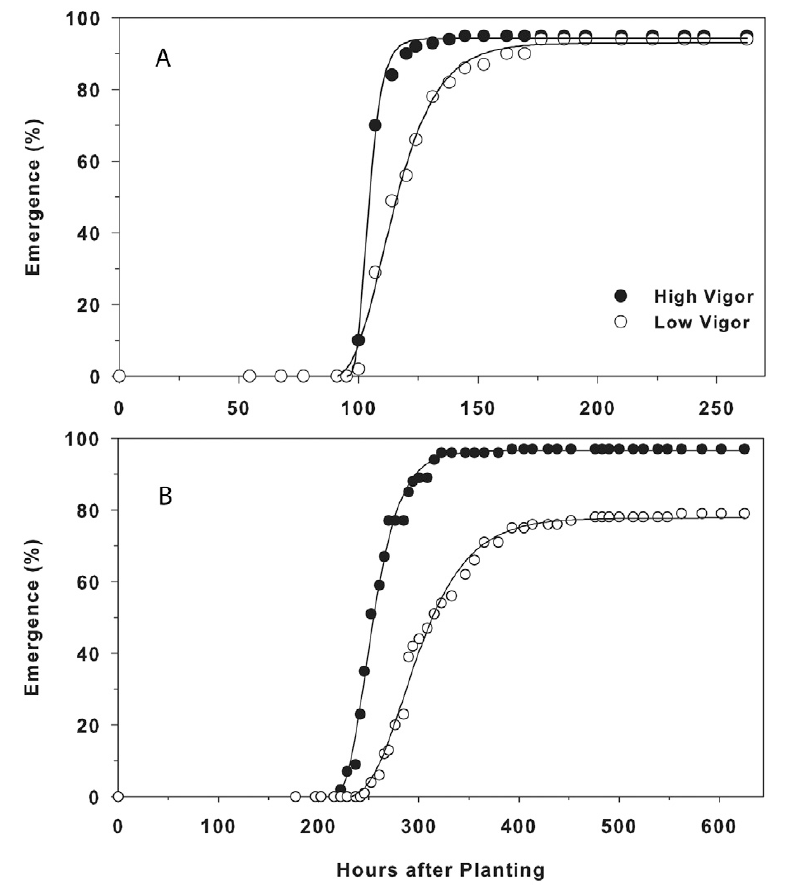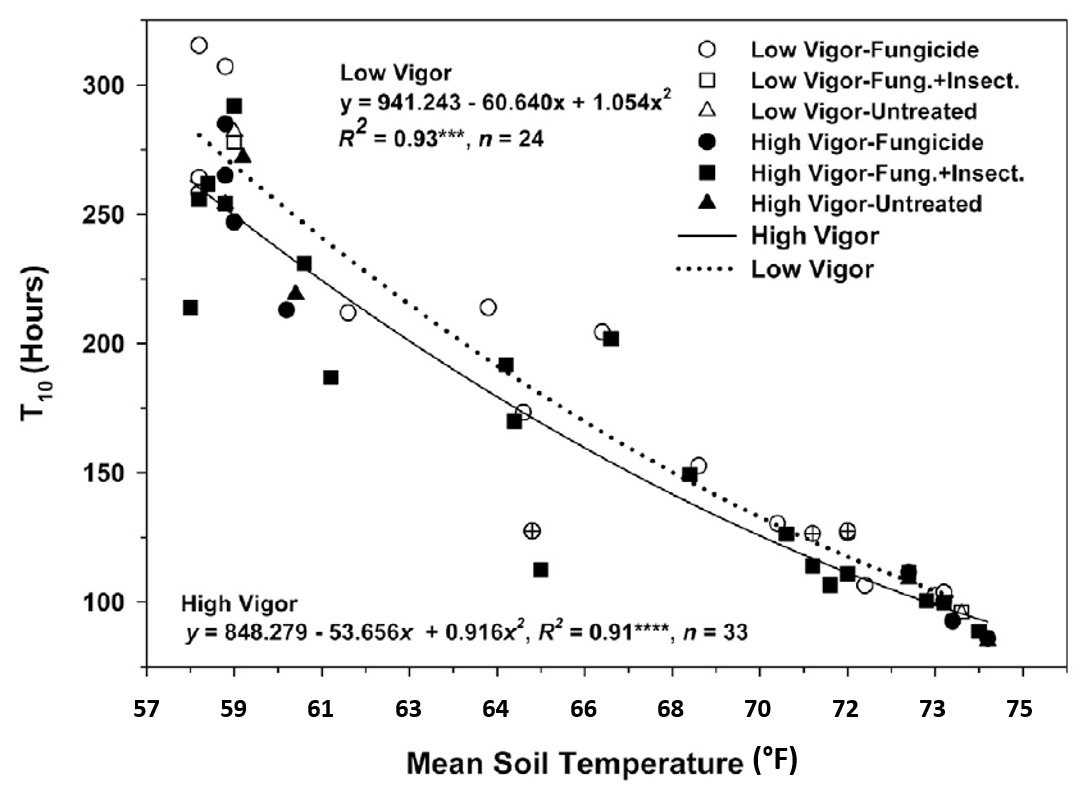Soil temperatures and planting timing – Part 1 of 3: Optimal soil temperature for planting
Timing for planting corn and other field crops is based in part on when soil temperatures are optimal for seed germination and seedling emergence.

Timing of spring crop planting is dependent on a number of variables. Seed availability, equipment readiness, field dryness, ability to conduct timely weed management (tillage and/or herbicide burndown), and other factors all play into the decision of when to begin planting. Another important consideration is soil temperature. The soil temperature commonly cited for adequate corn and soybean germination and emergence is 50 degrees Fahrenheit, and that temperature is used as the base for calculating modified growing degree days (GDD) for most field crops. See “Heat Unit Concepts Related to Corn Development” by Purdue University’s corn agronomist Bob Nielsen for more information on calculating heat units.
Stand uniformity is critical to achieve maximum yields, and uniformity of emergence timing is an important part of that. In addition to seeding depth, soil temperature is also a factor in determining the rate and timing of emergence. Corn requires about 119 GDDs using soil temperatures from planting to emergence. To put this in perspective, the maximum and minimum soil temperatures at 2-inch depth at the Michigan State University Enviroweather station in Coldwater on April 8, 2019 (the warmest soil date so far this year), were 62.4 and 50.9 F, respectively. (Note: That date was the third day in a row where air temperatures reached 72 F or above.) This generated 6.65 GDDs based on soil temperature. At that rate, the seed would be susceptible to insect predation, soil-borne diseases, potential flooding, etc. for approximately 18 days prior to emergence. In reality, only 4 GDDs were generated in the seven days following that date.
In a recent study by dos Santos et al. 2019, researchers tested germination and emergence rates of four different corn hybrids at five different soil temperatures under greenhouse conditions. The results are shown in Figure 1. The highest rates of germination and emergence and the quickest emergence were achieved when the soil temperature was 77 F. The opposite was true when soil temperature was 59 F. Though differences can be seen among hybrids, and different results may be found with hybrids grown under Michigan conditions (this study was conducted in Mato Grosso, Brazil), it appears soil temperatures higher than 50 F are required for the quickest and most uniform corn emergence.
Egli and Rucker, 2012, conducted research at the University of Kentucky to investigate the impact seed vigor has on emergence. According to Association of Official Seed Analysts, 2009, seed vigor is defined as “those seed properties that determine the potential for rapid, uniform emergence and development of seedlings under a wide range of field conditions.” The authors used both low-vigor and high-vigor seed in the testing. In Figure 2A, seeds were grown in a greenhouse between 64 and 77 F while in Figure 2B the seeds were grown in a cool growth chamber at 50 F for 10 hours and 68 F for 22 hours (with 1 hour transition times).

Compared with cooler conditions, high-vigor seeds emerged approximately 200 hours (eight days) earlier under the warmer conditions while the low-vigor seeds emerged approximately 250 hours (10 days) earlier. The low-vigor seed also had nearly a 20 percent greater emergence rate under the warmer conditions. It is interesting to note both high- and low-vigor seed had similar standard germination rates (99 percent and 98 percent, respectively), but the high-vigor seed cold test germination was found to be 93 percent while the low-vigor seed cold test was only 45 percent. Figure 3 shows the impact of soil temperature on the time it took to achieve 10 percent of final emergence (T10). The graph shows that T10 was approximately three times longer at 58 F (96 hours, or four days) than at 74 F (288 hours, or 12 days).

When do Michigan soils tend to achieve optimal temperatures for corn emergence? What is the best source for finding out what these temperatures are in your part of the state? Part 2 and Part 3 of this series will look at MSU’s Enviroweather system of weather stations and what historic spring soil temperatures have been in Michigan.
Citations
- Association of Official Seed Analysts (AOSA). 2009. Seed Vigor Testing Handbook. AOSA, Stillwater, OK.
- dos Santos, H.O. et al. 2019. Effect of Soil Temperature in the Emergence of Maize Seeds. Journal of Agricultural Science. 11(1):479-484.
- Egli, D.B. and Rucker, M. 2012. Seed Vigor and the Uniformity of Emergence of Corn Seedlings. Crop Science, 52:2774-2782.



 Print
Print Email
Email

